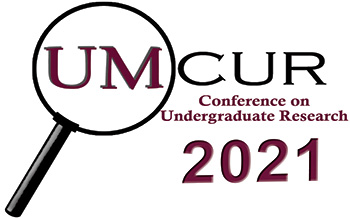Project Type
Presentation
Faculty Mentor’s Full Name
Blakely Brown
Faculty Mentor’s Department
Public Health
Abstract / Artist's Statement
Food insecurity is the lack of a household’s physical and economic access to adequate amounts of nutritious, safe, and culturally appropriate foods. Food insecurity is considered a major public and health and nutrition problem in the United States. In 2019 the United States had a household food insecurity rate of 10.5% which represents a total of 35.2 million people. The COVID-19 pandemic is expected to increase the number of food-insecure individuals in the U.S. to 54.3 million (2020/21 projections). The connection between military service and increased vulnerability to food insecurity is currently inconclusive. Not only is there limited research on the relationship between veterans and food insecurity, the existing research focuses on older veterans (e.g., 60 years and older), thus limiting our understanding of various socioeconomic factors associated with food insecurity that younger veterans and/or veterans attending college may be experiencing. Socioeconomic factors that can affect food insecurity includes income, job availability, ability to work, disability status, and access to support services. As food insecurity increases the prevalence and severity of chronic disease and stress, and our newest veterans are overwhelmed by mental health diagnoses, food insecurity in veterans would be placing more strain on an already vulnerable group. My research explores the prevalence of food insecurity in college student veterans and ways to decrease food insecurity in this population. I conducted my research via a Qualtrics online survey. The UM Veterans Office sent an email that contained a link to the survey to student veterans enrolled in UM, Missoula College, and Bitterroot College. I hope to have 100 college veterans complete the survey. I will analyze the data and present descriptive statistics for food secure versus food insecure households, demographics, and socioeconomic factors. Data will be analyzed using SPSS v25 (IBM). This data will help identify relationships between food insecurity status and socioeconomic factors in college student veterans and their time of service and may help inform future programming efforts to reduce food insecurity in college veterans at these institutions.
Category
Life Sciences
.mov file format
UMCUR-Presentiation-Recording.mp4 (16646 kB)
.mp4 file format
Assessing the Prevalence of Food Insecurity in College Student Veterans
Food insecurity is the lack of a household’s physical and economic access to adequate amounts of nutritious, safe, and culturally appropriate foods. Food insecurity is considered a major public and health and nutrition problem in the United States. In 2019 the United States had a household food insecurity rate of 10.5% which represents a total of 35.2 million people. The COVID-19 pandemic is expected to increase the number of food-insecure individuals in the U.S. to 54.3 million (2020/21 projections). The connection between military service and increased vulnerability to food insecurity is currently inconclusive. Not only is there limited research on the relationship between veterans and food insecurity, the existing research focuses on older veterans (e.g., 60 years and older), thus limiting our understanding of various socioeconomic factors associated with food insecurity that younger veterans and/or veterans attending college may be experiencing. Socioeconomic factors that can affect food insecurity includes income, job availability, ability to work, disability status, and access to support services. As food insecurity increases the prevalence and severity of chronic disease and stress, and our newest veterans are overwhelmed by mental health diagnoses, food insecurity in veterans would be placing more strain on an already vulnerable group. My research explores the prevalence of food insecurity in college student veterans and ways to decrease food insecurity in this population. I conducted my research via a Qualtrics online survey. The UM Veterans Office sent an email that contained a link to the survey to student veterans enrolled in UM, Missoula College, and Bitterroot College. I hope to have 100 college veterans complete the survey. I will analyze the data and present descriptive statistics for food secure versus food insecure households, demographics, and socioeconomic factors. Data will be analyzed using SPSS v25 (IBM). This data will help identify relationships between food insecurity status and socioeconomic factors in college student veterans and their time of service and may help inform future programming efforts to reduce food insecurity in college veterans at these institutions.
